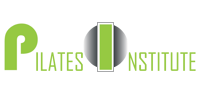The Balancing Act of Strengthening & Flexibility
The abs and core typically get the lion’s share of attention when it comes to Pilates, leaving the fabulous effects Pilates delivers to the peripheral muscles somewhat neglected. Pilates masterfully sculpts beautiful arms, tones long, lean legs, tightens and lifts the buttocks, and masterfully shapes the muscles of the back. When speaking of the core, we only mention core strength, but when speaking of the muscles of the arms, legs, shoulders and back, both strength and flexibility are important. In fact, it is this balance of strength and flexibility that not only creates the look of long, lean, sculpted muscles of the Pilates body, but also produces muscles that are simultaneously supple, strong and resilient. Because of the spring resistance of the Pilates equipment, muscles are strengthened along the entire length of the muscle, not just in the belly of the muscle. Thus, the “bulky” factor is reduced as well as the tightness, increasing flexibility.
The importance of strength goes virtually undisputed. We all know that stronger muscles enable us to lift more, push more and jump higher, but the relationship of strength and flexibility not often discussed. Flexibility is important because it allows for increased range of motion, and increased range of motion is a key component of POWER (Force or Strength x Distance or ROM/time = POWER.) Think of it this way: who is going to throw a ball further, given equal strength, the individual who can bring his arm 12-14 inches behind him to initiate the throw, or the individual who can only bring his hand just past his head? Who will drive the golf ball further? Kick a ball further? In other words, increased range of motion will increase the power that you can deliver. Flexibility is also important for injury prevention. Flexible muscles are more elastic, and thus able to restore themselves after being stretched, especially when the stretch is sudden. (Think of a tennis player leaping to get a ball, or a goalie in ice hockey popping into a virtual split in order to defend the goal.)
For athletes, the balance of strength and flexibility is the magic formula, and this formula will differ for each person, depending on the activity in which he/she is participating. A goalie in ice hockey will need more strength than the rhythmic gymnast, and the pitcher in professional baseball will need more flexibility in the shoulder joint than the recreational tennis player. Actually, we’ve discovered that at our Pilates studio, this balance of strength and flexibility is a large reason that men are gravitating towards Pilates in greater numbers. The men who do Pilates realize that they are lifting greater weights, discovering more power in their tennis serve, hitting more accurate drives on the golf course and staying more injury free because of Pilates’ ability to balance the increase of and relationship between strength and flexibility. Active women and men who practice Pilates are gaining new levels of strength, without sacrificing flexibility, and vice versa.
Some people choose to do Pilates as their sole form of exercise, along with cardiovascular conditioning, but more and more Pilates is being utilized as a highly efficient and effective means of cross-training, as a skilled instructor can provide Pilates cross-training exercises that will enhance any sport or recreational activity that people enjoy. Even if you can’t get to a studio, a well-balanced mat workout, especially if stability balls and BOSUs(r) are included, can do wonders for your favorite activity.
September 22, 2008. Tags: Pilates workouts, strength, flexibility, Pilates, crosss-training, mat, BOSU, stretching, conditioning, power, supple, lean, tone, muscle, sculpt, Pilates conditioning, Pilates core strength, Pilates core power, Pilates cross-training, Pilates flexibility, increase core strength, increase flexibility, tone arms, tone legs, leaner legs, longer legs, Pilates stretching, Pilates power, Pilates men, longer muscles, leaner muscles. Pilates Posts. 2 Comments.
Article taken from the Ultimate Pilates Blog
